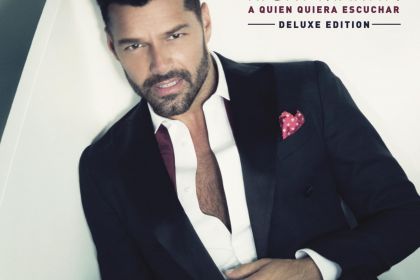SONGWRITER
El Farsante and 7 more songs by Ozuna in Dorian and Aeolian modes

Ozuna's Odisea CD cover
Country: Puerto Rico
Genre: Urbano
Few could have imagined that a career in music could have such an outstanding start as the one of Puerto Rican urbano singer Ozuna who was named the most-watched artist on YouTube worldwide by Guinness World Records just a year after the release of his debut album.
Quite often the meteoric rise of new pop artists can be usually explained by peculiarities of vocal timbres, some of which prove to be more appealing on a wider scale regardless of the lyrics or song composition. In the case of Ozuna, this rule can hardly be applied since the vocals in the urbano genre are subjected to such deep digital processing that the voice identity of the singers is almost completely lost.
The main reason for the phenomenal popularity of Ozuna is to be found in the compositional technique of his songs, the vast majority of which fully comply with the canons of classical theory and are written in two minor modes: Aeolian and Dorian. At the same time, the chord progressions used by him rarely contain more than four triads that are cyclically repeated throughout the entire track.
A typical example of Ozuna's songwriting style is evident in El Farsante from his debut album. In the harmonic analysis of the song chord chains, the scale degrees (denoted with Roman numerals) show the following progressions in D♯ Aeolian: D♯m–F♯–A♯m–G♯m or i–III–v–iv.
Listen to El Farsante by Ozuna:
Aeolian mode, also known as natural minor, is one of the most common compositional instruments in both classical and popular music, so it is not surprising to find it dominating Ozuna's work. Here are four more examples of some of his best songs featuring simple progressions written in Aeolian mode:
- La Modelo in the key of F minor: Fm–E♭–A♭–D♭–Fm or i–VII–III–VI–i
- Te Robaré in the key of D minor: Dm–C–B♭–F–C or i–VII–VI–III–VII
- Mamacita in the key of D minor: Dm–Am–Gm–F or i–v–iv–III
- Caramelo in the key of D♯ minor: B–C♯–D♯m–C♯ or VI–VII–i–VII
Note that La Modelo, Te Robaré, and Caramelo feature the minor tonic chord of the first scale degree that appears exclusively in combination with major chords rooted in the third, sixth, and seventh degrees, respectively named as the mediant, submediant, and subtonic chords. This fact gives a clear major sound to songs written in the natural minor mode.
To somehow diversify his straight-line chord progressions, Ozuna applies Dorian minor mode. More on its structure in this article: 5 songs featuring Dorian mode.
Here are two examples of Dorian mode appearing in Ozuna's singles:
- Adicto in B♭ Dorian: B♭m–Fm–E♭ or i–v–IV
- Aventura in C Dorian: Cm–Gm–B♭–F or i–v–VII–IV
The skillful application of tonal theory in songwriting is a key aspect to the long-term popularity of many singles, as proven by leading musicians including The Beatles, whose output is a treasure trove of ideas implementing classical compositional techniques.
Learn more about the structure of these diatonic musical modes explained through the harmonic analysis of popular songs in the following articles:
- 8 songs to introduce Aeolian mode and natural minor scale
- 6 songs combining harmonic minor and Aeolian mode
- Mariposa Traicionera: meaning and flamenco roots of Maná's top hit
- Livin' la Vida Loca: why is Ricky Martin's best song so catchy?
- Locomotive Breath: fine groove born from Jethro Tull's studio session
- Shaman's Blues: quintessential The Doors song refined their most controversial album
- A Dios le Pido: Juanes' Spanish lyrics behind the song success
- 5 songs featuring Dorian mode
- Knights of Cydonia: Dorian-mode refrain boosting best Muse song



